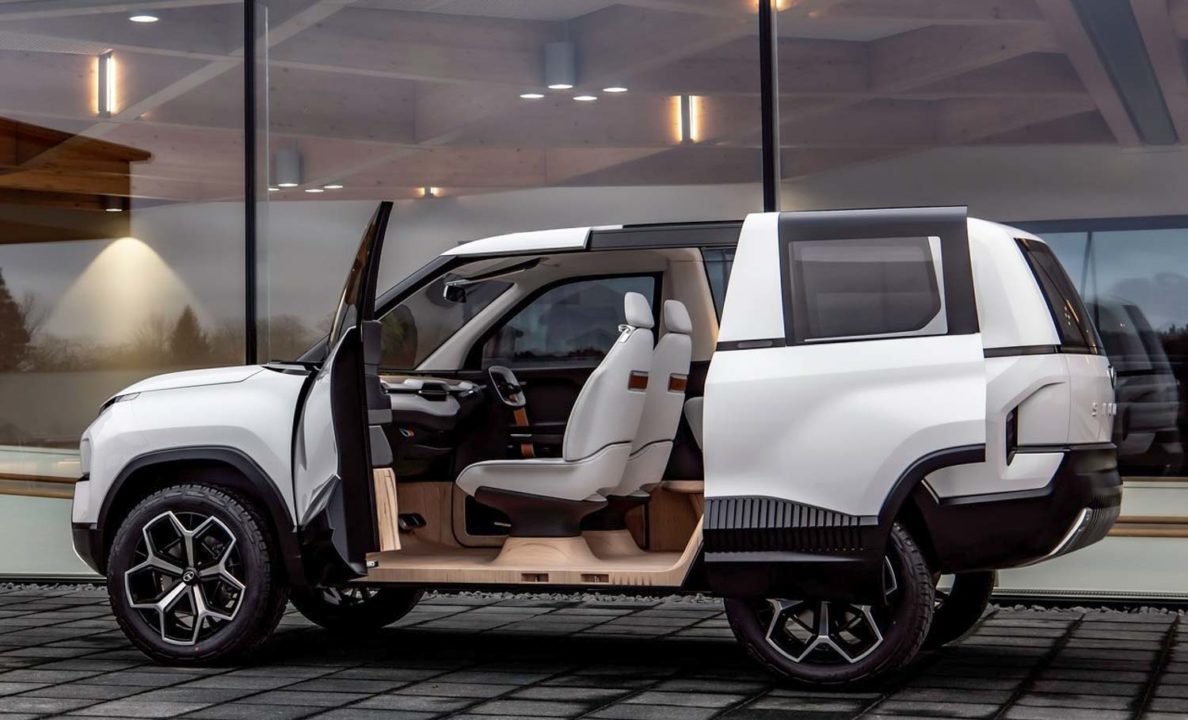The Tata Sierra, a name that resonates with both nostalgia and anticipation, is making a grand comeback to the Indian automotive scene. Once a groundbreaking SUV, it’s returning in a thoroughly modern avatar. Here are 5 big things you need to know about the new Tata Sierra:
1. A Legend Reimagined: From Three-Door Icon to Five-Door Practicality
The original Tata Sierra, launched in 1991, holds a unique place in Indian automotive history as the country’s first indigenously designed SUV. Its distinctive three-door body and iconic wraparound rear glass made it instantly recognizable. The new Sierra, however, is a modern reinterpretation. While it will retain hints of its predecessor’s rugged charm and signature elements like the curved-over rear-side windows, it’s evolving into a more practical five-door SUV. This shift reflects contemporary demands for easier accessibility and everyday usability, all while aiming to evoke that beloved “Sierra” feel.
2. Dual Powertrain Strategy: EV First, Then ICE
In a strategic move aligning with Tata Motors’ forward-looking vision, the new Sierra will launch with a dual powertrain option: electric (EV) and internal combustion engine (ICE). The Sierra EV is expected to hit the market first, potentially by late 2025 or mid-2026, with the ICE version following in early 2026. This approach allows Tata to cater to the burgeoning demand for electric vehicles while also offering a conventional fuel option for traditional buyers. The EV variant is anticipated to be built on Tata’s Gen2 EV platform, utilizing the acti.ev architecture, potentially offering a range of around 500 km per charge. The ICE version is rumored to feature new 1.5-litre turbo-petrol and 1.5-litre diesel engine options.
3. Feature-Rich & Tech-Loaded Interior
Get ready for a premium and technologically advanced cabin experience in the new Tata Sierra, a significant departure from the original’s more utilitarian design. Expect features like a multi-screen setup (potentially a triple-screen layout in the ICE and a dual-screen in the EV, including a digital instrument cluster and a large central infotainment touchscreen), a four-spoke steering wheel with an illuminated Tata logo, ambient lighting, dual-zone climate control, wireless charging, and connected car technology. Higher variants could also boast a panoramic sunroof, ventilated front and rear seats (a rare offering in this segment), a JBL sound system, and advanced driver-assistance systems (ADAS), potentially even Level 2 capabilities.
4. Bold Design Language with Retro Touches
The design of the new Sierra is a masterful blend of the original’s iconic silhouette and Tata’s contemporary “Impact Design” philosophy. While it will have a more modern and muscular stance, design cues like the tall bonnet, squared-off wheel arches, and prominent silver skid plates will underscore its SUV credentials. The EV version is expected to feature sleek, connected LED DRLs and taillamps, adding a futuristic touch. The overarching goal is to create a vehicle that is unmistakably a Sierra, yet thoroughly modern and appealing to today’s discerning buyer.
5. Strategic Positioning and Market Impact
The upcoming Tata Sierra is poised to be a significant contender in the Indian SUV market. Expected to be positioned above the Curvv in Tata’s lineup, it will likely go head-to-head with popular mid-size SUVs such as the Hyundai Creta, Maruti Grand Vitara, Kia Seltos, and upcoming electric SUVs. With an estimated starting price of ₹25 lakh for the EV and potentially around ₹10.50 lakh for the ICE version (ex-showroom), the Sierra aims to attract buyers seeking a blend of heritage, modern features, and strong performance, particularly in the booming EV segment. Its return signals Tata Motors’ continued commitment to expanding its product offerings and strengthening its presence in the competitive SUV landscape.
